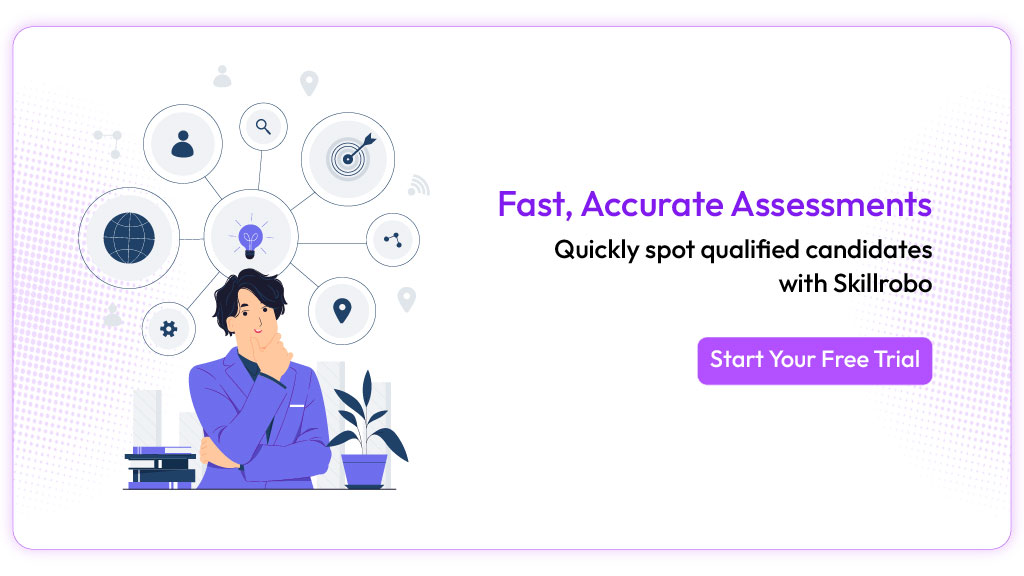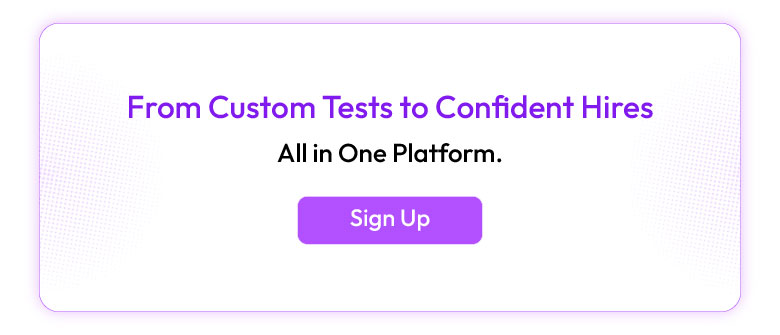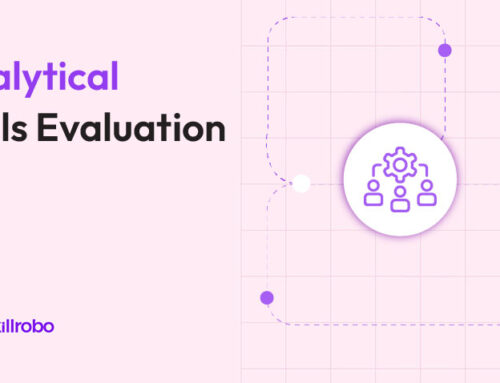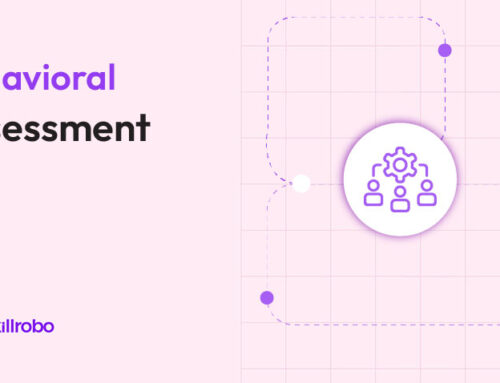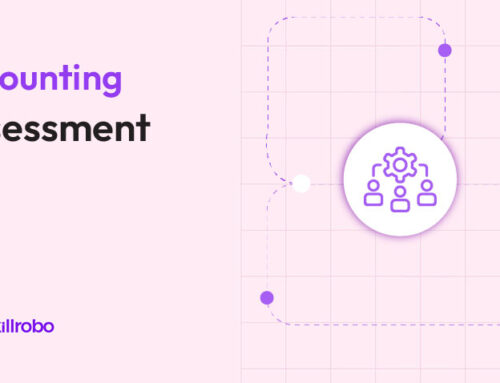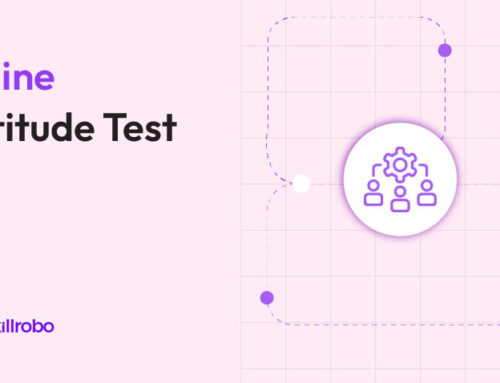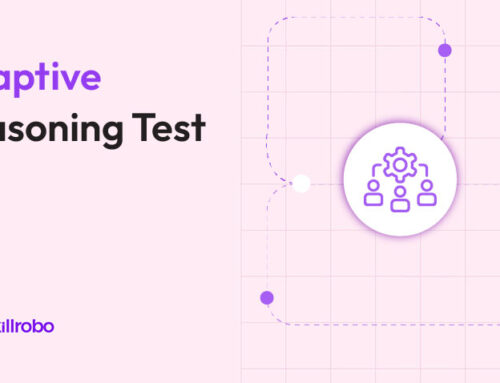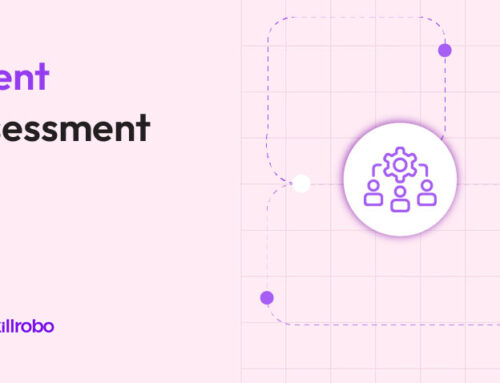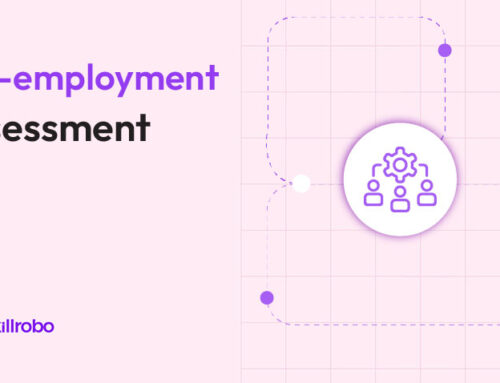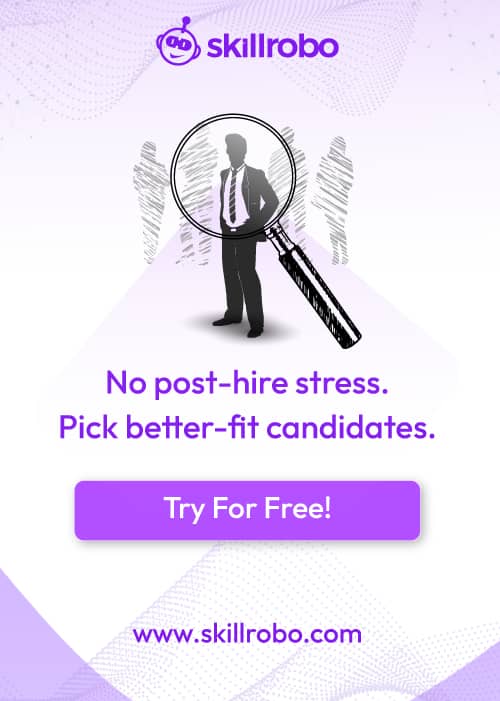Table of Contents
- Key Takeaways
- Why Skills-Based Hiring Is Gaining Momentum
- What Is Skills Based Hiring?
- Benefits of Skills-Based Hiring
- What Companies Get Wrong About Skills-Based Hiring
- How to Adopt Skills-Based Hiring Practices
- Examples of Skills-Based Hiring in Action
- The Role of Assessments in Skills-Based Hiring
- Conclusion
Related articles
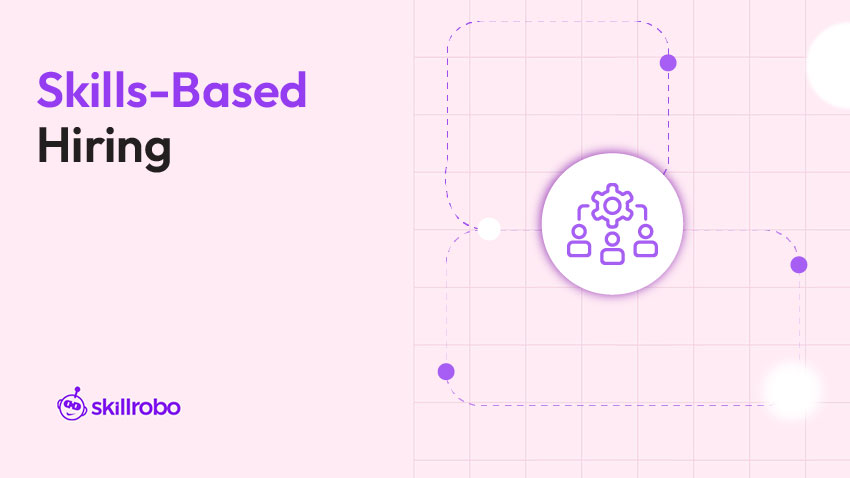
Key Takeaways
- Skills-based hiring focuses on evaluating job candidates by their competencies, not just degrees or job titles.
- It promotes equity, speeds up recruitment, and better aligns hires with actual job performance.
- Tools and assessments can help companies reliably implement skills based hiring practices at scale.
- Misunderstanding skills-based hiring can result in vague role requirements and flawed candidate evaluation.
Why Skills-Based Hiring Is Gaining Momentum
In a shifting labor market where talent is scarce but job requirements are evolving, skills-based hiring is becoming a business imperative. Employers are realizing that conventional signals like degrees or past job titles don’t always reflect true capability. A candidate without a four-year degree may still outperform one who has it—if they possess the right skills.
This approach empowers companies to widen their talent pool, improve retention, and create fairer hiring experiences. It also reflects the way modern work functions: based on problem-solving, adaptability, and real-world execution, not résumé keywords. Many organizations now use data-driven screening tools to objectively assess candidates and align hiring decisions with real capabilities.
What Is Skills Based Hiring?
Skills-based hiring is the practice of evaluating and selecting candidates based on their demonstrated abilities, rather than traditional proxies like degrees or years of experience. Instead of filtering résumés by academic background, recruiters prioritize the specific competencies and outcomes required for success in a given role. This shift not only helps uncover hidden talent but also reduces bias in the hiring process.
A structured skills based hiring guide typically includes several critical components:
- Clearly defined job tasks and the core skills required to complete them effectively
- Objective assessments, case simulations, or project-based tests that mirror real job challenges
- Transparent scoring frameworks to ensure fairness and consistency across candidates
- A fundamental shift from academic pedigree toward measurable performance and ability
In dynamic industries where roles evolve rapidly, especially in tech, finance, and customer service, this model is particularly valuable. It enables companies to hire for current and future needs, not outdated credentials. Platforms that offer solutions like pre-employment screening for cognitive abilities and online talent assessments with adaptive difficulty levels help tailor this approach to each role, ensuring that candidates are assessed fairly and effectively at scale.
A Comparison Table: Skills-Based Hiring vs. Traditional Hiring
| Feature | Traditional Hiring | Skills-Based Hiring |
|---|---|---|
| Primary Focus | Degrees and experience | Demonstrated skills and competencies |
| Screening Method | Resume filtering | Skills assessments and work samples |
| Inclusivity | Often excludes non-degree holders | Expands access to diverse talent |
| Job Descriptions | Credential-heavy | Outcome- and skill-based |
| Interview Structure | Unstructured or semi-structured | Structured with scoring criteria |
| Time-to-Hire | Often longer | More efficient with pre-screening automation |
| Hiring Accuracy | Prone to bias or assumptions | Data-driven and performance-based |
Benefits of Skills-Based Hiring
Adopting a skill-based hiring model doesn’t just change who gets hired—it reshapes how organizations think about potential, performance, and opportunity. By focusing on what candidates can do, rather than where they went to school or how long they’ve worked in a similar role, companies unlock new dimensions of talent and strengthen long-term workforce strategy. Below are the key advantages of this forward-thinking approach.
1. Broadens the Talent Pool
Eliminating degree and experience filters opens doors to non-traditional candidates who may have gained expertise through bootcamps, freelancing, certifications, or self-learning. This expanded reach enables access to a more diverse, skilled, and motivated talent pipeline. Many companies use cloud-based online talent assessments to evaluate global candidates consistently, regardless of background.
2. Increases Job Fit and Performance
Hiring based on skills ensures candidates are selected for their ability to perform, not just present. This leads to faster onboarding, quicker time-to-productivity, and better alignment with job expectations. Platforms offering pre-employment skill testing for customer service roles or other domain-specific tests help measure real-world capabilities before an offer is made.
3. Enhances Equity and Inclusion
By removing educational and experiential barriers, skills-based hiring creates a more level playing field. It offers qualified individuals from underrepresented or underserved communities a fair chance to compete and succeed. This shift can improve both company culture and employer branding over time.
4. Improves Retention and Growth
When employees are hired for what they can do, rather than where they’ve worked or studied, they tend to feel more empowered and confident in their roles. This results in higher engagement, stronger performance, and lower turnover. Over time, it contributes to a culture where internal mobility and development are based on merit.
What Companies Get Wrong About Skills-Based Hiring
Despite increasing interest, many organizations still misapply or misunderstand what skills-based hiring truly involves. While the intention to focus on capabilities over credentials is clear, the execution often falls short. Here are common mistakes companies make—and why they matter:
1. Confusing soft requirements with skills
Many job descriptions still list vague traits like “team player,” “strong communicator,” or “self-starter.” While these attributes are desirable, they aren’t measurable unless tied to specific tasks or outcomes. Skills-based hiring requires translating these qualities into observable behaviors—for example, “able to lead cross-functional meetings” instead of “good communicator.”
2. Failing to define roles clearly
If hiring teams don’t fully understand the competencies a role demands, they can’t assess candidates effectively. It’s not enough to use broad titles like “marketing specialist” or “project manager.” Organizations must break down what success looks like in the role and identify the core skills—technical, behavioral, and strategic—that contribute to it.
3. Over-relying on unstructured interviews
Traditional interviews often lean heavily on gut feeling or “culture fit,” which can introduce bias and inconsistency. Without structured interview questions or scorecards, recruiters may overlook qualified candidates simply because they didn’t present themselves in a certain way. Skills-based hiring hinges on evaluating real abilities through performance-based tasks or structured dialogue.
4. Neglecting to train hiring teams
Even with the best tools in place, skills-based hiring can fail if recruiters and hiring managers aren’t equipped to use them. Without proper training on assessment criteria, scoring frameworks, and interview structure, teams may revert to old habits, defaulting to resumes or intuition rather than skill evaluation.
To avoid these mistakes, HR teams need structured processes, relevant skills assessments, and strong alignment across hiring stakeholders.
How to Adopt Skills-Based Hiring Practices
Transitioning to a skills based hiring approach doesn’t require dismantling your entire recruitment process. However, it does demand clarity, structure, and alignment across HR and hiring teams. Follow these steps to embed a skills-first mindset into your talent acquisition strategy:
Step 1: Redefine Job Descriptions
Start by removing unnecessary degree or tenure requirements unless they are absolutely essential. Focus instead on the outcomes the role is expected to deliver and the skills required to achieve them. For example, instead of stating “3–5 years of marketing experience,” define what the candidate must be able to do, such as “develop and execute multi-channel campaigns with a 10% engagement rate.”
Step 2: Implement Skills Testing
Introduce objective, role-relevant assessments into your hiring workflow. These can include coding challenges, simulations, case studies, or job-specific tasks that mirror real responsibilities. Pre-employment testing platforms like Skillrobo offer a wide range of customizable assessments that help validate skills before the interview stage, making candidate comparisons more data-driven and fair.
Step 3: Train Interviewers on Competency-Based Evaluation
Equip hiring managers and recruiters with structured interview frameworks and scorecards. These should be tied directly to role-specific skills and behaviors, not general personality traits. Train your team to ask targeted, situational questions and to evaluate responses based on defined rubrics to ensure consistency and reduce bias.
Step 4: Use Hiring Technology to Automate and Streamline
Invest in a digital hiring stack that supports skills-based screening, automated scoring, and integrated workflows. Tools like Skillrobo can streamline test distribution, filter candidates based on performance, and generate real-time analytics that feed into your ATS or HRIS platforms—saving time and increasing hiring accuracy.
Step 5: Reassess Internal Mobility and Upskilling
Apply the same skills-first lens internally. Map out current employee capabilities, identify gaps, and offer learning opportunities to close them. Promote based on demonstrable performance and potential, not just years in a role. This fosters engagement, strengthens retention, and builds a culture of meritocracy.
Examples of Skills-Based Hiring in Action
Many forward-thinking companies have successfully adopted skills-based hiring to drive equity, performance, and hiring efficiency. By focusing on competencies rather than credentials, these organizations are reshaping the way talent is identified and integrated. Here are three real-world examples that illustrate how this model works in practice:
1. IBM
IBM removed degree requirements for over 50% of U.S. job openings and prioritized verified skill certifications instead. This shift led to a significant increase in applications from underrepresented groups and improved job performance across several business units. The company also partnered with community colleges and workforce programs to build talent pipelines based on in-demand skills.
2. Google
Google’s hiring strategy emphasizes work sample tests and structured interviews that focus on solving real-world problems rather than assessing academic qualifications. Their approach includes role-specific exercises and behavioral assessments that reflect day-to-day challenges. This has resulted in better hiring outcomes and stronger alignment between employee skills and job demands.
3. Merck
Merck integrated role-based skill assessments into its talent acquisition process, allowing hiring managers to shortlist candidates based on the practical capabilities required for success. These assessments are used alongside structured interviews to validate job readiness. The shift has helped Merck streamline recruitment for technical and operations roles while improving talent quality.
The Role of Assessments in Skills-Based Hiring
Objective assessments are at the core of successful skills based hiring. Without measurable evaluations, companies risk reverting to intuition or traditional bias-prone methods. A modern platform like Skillrobo helps automate this process.
How Skillrobo Supports Skills-Based Hiring:
- Customizable Skill Tests: Create role-specific assessments across technical and behavioral domains
- Real-Time Scoring: Get instant performance feedback with detailed analytics
- Bias-Free Evaluation: Replace subjective judgments with objective, data-driven scores
- Seamless ATS Integration: Sync assessments with your applicant tracking system
- Scalable for Volume Hiring: Automate high-volume screening while maintaining quality and accuracy
With Skillrobo, hiring teams can confidently make decisions based on capability, not assumptions.
Conclusion
Skills-based hiring is not a trend—it’s a transformational shift in how organizations identify, recruit, and retain top talent. It widens access, improves job performance, and creates fairer opportunities for all.
As industries evolve and traditional credentials lose relevance, hiring based on what people can do is not just smart—it’s essential.
Ready to build a more capable and inclusive workforce? Sign up for Skillrobo and bring your skills-first hiring strategy to life.

Key Takeaways
- Skills-based hiring focuses on evaluating job candidates by their competencies, not just degrees or job titles.
- It promotes equity, speeds up recruitment, and better aligns hires with actual job performance.
- Tools and assessments can help companies reliably implement skills based hiring practices at scale.
- Misunderstanding skills-based hiring can result in vague role requirements and flawed candidate evaluation.
Why Skills-Based Hiring Is Gaining Momentum
In a shifting labor market where talent is scarce but job requirements are evolving, skills-based hiring is becoming a business imperative. Employers are realizing that conventional signals like degrees or past job titles don’t always reflect true capability. A candidate without a four-year degree may still outperform one who has it—if they possess the right skills.
This approach empowers companies to widen their talent pool, improve retention, and create fairer hiring experiences. It also reflects the way modern work functions: based on problem-solving, adaptability, and real-world execution, not résumé keywords. Many organizations now use data-driven screening tools to objectively assess candidates and align hiring decisions with real capabilities.
What Is Skills Based Hiring?
Skills-based hiring is the practice of evaluating and selecting candidates based on their demonstrated abilities, rather than traditional proxies like degrees or years of experience. Instead of filtering résumés by academic background, recruiters prioritize the specific competencies and outcomes required for success in a given role. This shift not only helps uncover hidden talent but also reduces bias in the hiring process.
A structured skills based hiring guide typically includes several critical components:
- Clearly defined job tasks and the core skills required to complete them effectively
- Objective assessments, case simulations, or project-based tests that mirror real job challenges
- Transparent scoring frameworks to ensure fairness and consistency across candidates
- A fundamental shift from academic pedigree toward measurable performance and ability
In dynamic industries where roles evolve rapidly, especially in tech, finance, and customer service, this model is particularly valuable. It enables companies to hire for current and future needs, not outdated credentials. Platforms that offer solutions like pre-employment screening for cognitive abilities and online talent assessments with adaptive difficulty levels help tailor this approach to each role, ensuring that candidates are assessed fairly and effectively at scale.
A Comparison Table: Skills-Based Hiring vs. Traditional Hiring
| Feature | Traditional Hiring | Skills-Based Hiring |
|---|---|---|
| Primary Focus | Degrees and experience | Demonstrated skills and competencies |
| Screening Method | Resume filtering | Skills assessments and work samples |
| Inclusivity | Often excludes non-degree holders | Expands access to diverse talent |
| Job Descriptions | Credential-heavy | Outcome- and skill-based |
| Interview Structure | Unstructured or semi-structured | Structured with scoring criteria |
| Time-to-Hire | Often longer | More efficient with pre-screening automation |
| Hiring Accuracy | Prone to bias or assumptions | Data-driven and performance-based |
Benefits of Skills-Based Hiring
Adopting a skill-based hiring model doesn’t just change who gets hired—it reshapes how organizations think about potential, performance, and opportunity. By focusing on what candidates can do, rather than where they went to school or how long they’ve worked in a similar role, companies unlock new dimensions of talent and strengthen long-term workforce strategy. Below are the key advantages of this forward-thinking approach.
1. Broadens the Talent Pool
Eliminating degree and experience filters opens doors to non-traditional candidates who may have gained expertise through bootcamps, freelancing, certifications, or self-learning. This expanded reach enables access to a more diverse, skilled, and motivated talent pipeline. Many companies use cloud-based online talent assessments to evaluate global candidates consistently, regardless of background.
2. Increases Job Fit and Performance
Hiring based on skills ensures candidates are selected for their ability to perform, not just present. This leads to faster onboarding, quicker time-to-productivity, and better alignment with job expectations. Platforms offering pre-employment skill testing for customer service roles or other domain-specific tests help measure real-world capabilities before an offer is made.
3. Enhances Equity and Inclusion
By removing educational and experiential barriers, skills-based hiring creates a more level playing field. It offers qualified individuals from underrepresented or underserved communities a fair chance to compete and succeed. This shift can improve both company culture and employer branding over time.
4. Improves Retention and Growth
When employees are hired for what they can do, rather than where they’ve worked or studied, they tend to feel more empowered and confident in their roles. This results in higher engagement, stronger performance, and lower turnover. Over time, it contributes to a culture where internal mobility and development are based on merit.
What Companies Get Wrong About Skills-Based Hiring
Despite increasing interest, many organizations still misapply or misunderstand what skills-based hiring truly involves. While the intention to focus on capabilities over credentials is clear, the execution often falls short. Here are common mistakes companies make—and why they matter:
1. Confusing soft requirements with skills
Many job descriptions still list vague traits like “team player,” “strong communicator,” or “self-starter.” While these attributes are desirable, they aren’t measurable unless tied to specific tasks or outcomes. Skills-based hiring requires translating these qualities into observable behaviors—for example, “able to lead cross-functional meetings” instead of “good communicator.”
2. Failing to define roles clearly
If hiring teams don’t fully understand the competencies a role demands, they can’t assess candidates effectively. It’s not enough to use broad titles like “marketing specialist” or “project manager.” Organizations must break down what success looks like in the role and identify the core skills—technical, behavioral, and strategic—that contribute to it.
3. Over-relying on unstructured interviews
Traditional interviews often lean heavily on gut feeling or “culture fit,” which can introduce bias and inconsistency. Without structured interview questions or scorecards, recruiters may overlook qualified candidates simply because they didn’t present themselves in a certain way. Skills-based hiring hinges on evaluating real abilities through performance-based tasks or structured dialogue.
4. Neglecting to train hiring teams
Even with the best tools in place, skills-based hiring can fail if recruiters and hiring managers aren’t equipped to use them. Without proper training on assessment criteria, scoring frameworks, and interview structure, teams may revert to old habits, defaulting to resumes or intuition rather than skill evaluation.
To avoid these mistakes, HR teams need structured processes, relevant skills assessments, and strong alignment across hiring stakeholders.
How to Adopt Skills-Based Hiring Practices
Transitioning to a skills based hiring approach doesn’t require dismantling your entire recruitment process. However, it does demand clarity, structure, and alignment across HR and hiring teams. Follow these steps to embed a skills-first mindset into your talent acquisition strategy:
Step 1: Redefine Job Descriptions
Start by removing unnecessary degree or tenure requirements unless they are absolutely essential. Focus instead on the outcomes the role is expected to deliver and the skills required to achieve them. For example, instead of stating “3–5 years of marketing experience,” define what the candidate must be able to do, such as “develop and execute multi-channel campaigns with a 10% engagement rate.”
Step 2: Implement Skills Testing
Introduce objective, role-relevant assessments into your hiring workflow. These can include coding challenges, simulations, case studies, or job-specific tasks that mirror real responsibilities. Pre-employment testing platforms like Skillrobo offer a wide range of customizable assessments that help validate skills before the interview stage, making candidate comparisons more data-driven and fair.
Step 3: Train Interviewers on Competency-Based Evaluation
Equip hiring managers and recruiters with structured interview frameworks and scorecards. These should be tied directly to role-specific skills and behaviors, not general personality traits. Train your team to ask targeted, situational questions and to evaluate responses based on defined rubrics to ensure consistency and reduce bias.
Step 4: Use Hiring Technology to Automate and Streamline
Invest in a digital hiring stack that supports skills-based screening, automated scoring, and integrated workflows. Tools like Skillrobo can streamline test distribution, filter candidates based on performance, and generate real-time analytics that feed into your ATS or HRIS platforms—saving time and increasing hiring accuracy.
Step 5: Reassess Internal Mobility and Upskilling
Apply the same skills-first lens internally. Map out current employee capabilities, identify gaps, and offer learning opportunities to close them. Promote based on demonstrable performance and potential, not just years in a role. This fosters engagement, strengthens retention, and builds a culture of meritocracy.
Examples of Skills-Based Hiring in Action
Many forward-thinking companies have successfully adopted skills-based hiring to drive equity, performance, and hiring efficiency. By focusing on competencies rather than credentials, these organizations are reshaping the way talent is identified and integrated. Here are three real-world examples that illustrate how this model works in practice:
1. IBM
IBM removed degree requirements for over 50% of U.S. job openings and prioritized verified skill certifications instead. This shift led to a significant increase in applications from underrepresented groups and improved job performance across several business units. The company also partnered with community colleges and workforce programs to build talent pipelines based on in-demand skills.
2. Google
Google’s hiring strategy emphasizes work sample tests and structured interviews that focus on solving real-world problems rather than assessing academic qualifications. Their approach includes role-specific exercises and behavioral assessments that reflect day-to-day challenges. This has resulted in better hiring outcomes and stronger alignment between employee skills and job demands.
3. Merck
Merck integrated role-based skill assessments into its talent acquisition process, allowing hiring managers to shortlist candidates based on the practical capabilities required for success. These assessments are used alongside structured interviews to validate job readiness. The shift has helped Merck streamline recruitment for technical and operations roles while improving talent quality.
The Role of Assessments in Skills-Based Hiring
Objective assessments are at the core of successful skills based hiring. Without measurable evaluations, companies risk reverting to intuition or traditional bias-prone methods. A modern platform like Skillrobo helps automate this process.
How Skillrobo Supports Skills-Based Hiring:
- Customizable Skill Tests: Create role-specific assessments across technical and behavioral domains
- Real-Time Scoring: Get instant performance feedback with detailed analytics
- Bias-Free Evaluation: Replace subjective judgments with objective, data-driven scores
- Seamless ATS Integration: Sync assessments with your applicant tracking system
- Scalable for Volume Hiring: Automate high-volume screening while maintaining quality and accuracy
With Skillrobo, hiring teams can confidently make decisions based on capability, not assumptions.
Conclusion
Skills-based hiring is not a trend—it’s a transformational shift in how organizations identify, recruit, and retain top talent. It widens access, improves job performance, and creates fairer opportunities for all.
As industries evolve and traditional credentials lose relevance, hiring based on what people can do is not just smart—it’s essential.
Ready to build a more capable and inclusive workforce? Sign up for Skillrobo and bring your skills-first hiring strategy to life.

